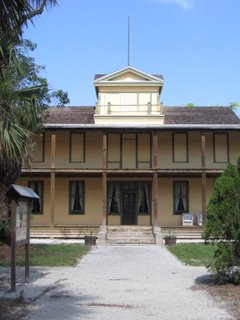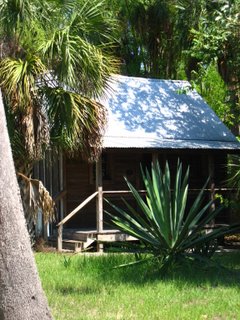It was in 1869 that Cyrus Teed had his “divine illumination.” The time, generally speaking, was right for divine illuminations: Teed's contemporaries, groups like the Mormons, the Harmonists, and the Oneida Community, all began based on communal property and a certainty that God's work was not yet being carried out on earth. Of course, one former member of the utopian Oneida Community—a man named Charles Guiteau—shot President James Garfield because God commanded him to.
In any case, while the Koreshan Unity began in New York, as did the Mormons, the Oneidans, and many others during the Great Awakening, the Koreshans quickly moved to Chicago. From there, after a gift from homesteader Gustav Damkohler, Teed moved the group to Estero in 1896 to form the New Jerusalem.
Teed was a bit kooky, but his heart was in the right place. He believed himself immortal, for one thing, and when he died in 1908, his followers waited up for days for him to, well, resurrect himself. It didn't happen, and eventually they buried him. For another, he preached that the earth was actually the inside of a hollow sphere with the sun in the middle, which at least one of his members believed until the moon landing in 1969.
Still, many of his ideas are attractive, and the Koreshans did not produce even a failed presidential assassin.1 Teed encouraged learning and the arts, and the Koreshans had schooling for their children, lectures on subjects from music composition to osteopathy, and planned for a lending library, though it was never built. Additionally the Art Hall held orchestra concerts, theater productions, and all sorts of other events for the happiness of the settlers.
But the Koreshans, obviously, died out. The last four members deeded their land to the State of Florida in 1961 in Teed's memory, and the State has since preserved the buildings and grounds to a reasonable degree. But why did the Mormons thrive in Utah and the Koreshans fail in Florida?
The answer, I think, is in reproduction, specifically that the most fervent Koreshan believers did not reproduce while the most fervent Mormons had more children than fingers. Teed divided the Koreshans into two orders: the Cooperative Order, whose members lived outside the settlement and could maintain their families; and the Religious Order, whose members were divided by sex, required to live in the settlement, and celibate.
The Koreshans never numbered more than a few hundred, if that many. With no or few little Koreshans running around, Teed's grand city—New Jerusalem was supposed to be able to accommodate 10 million people—and his grand new religion failed to leave behind more than a handful of machinery, wood frame buildings, and a population of adherents who could protect the settlement from the huge, amoebic strip mall that is growing across the road.
1 On the other hand, the Oneida Community became Oneida, Ltd., which still makes dinnerware today.



No comments:
Post a Comment